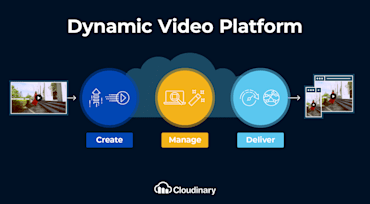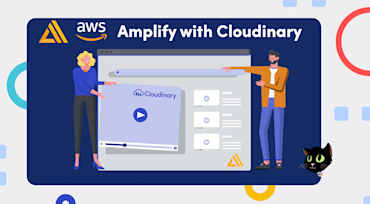As defined by Amazon Web Services (AWS), Amplify is a set of products and tools with which mobile and front-end web developers can build and deploy AWS-powered, secure, and scalable full-stack apps. Also, you can efficiently configure their back ends, connect them to your app with just a few lines of code, and deploy static web apps in only three steps. Historically, because of their performance issues, managing images and videos is a daunting challenge for developers. Even though you can easily load media to an S3 bucket with AWS Amplify, transforming, compressing, and responsively delivering them is labor intensive and time consuming.

Part 1 of this series highlights the basics of user-generated content (UGC) and its benefits for e-commerce. Part 2 describes how to leverage UGC images in e-commerce and efficiently upload, transform, and deliver them with Cloudinary. In part 3 we will address videos in UGC and the many related management capabilities offered by Cloudinary.

It’s human nature for most to want a sneak peek at upcoming content whenever possible. Think movie trailers or the “on next week’s episode” part of your favorite show. For video producers, an essential goal is to attract more views and clickthroughs.

It’s widely known that video is the most effective way of communicating your brand to your audience. It is also an extremely varied medium. Take a look at the existing videos in your media library, you’ll find videos with differing lengths, colors, brightness and density of content. All of these videos need to be optimized in a different way. Cloudinary’s new automatic video quality can intelligently analyze each and every video to encode it using the most optimized settings, ensuring the best trade-off between file size and visual quality, whilst also maintaining a consistent experience throughout. All you need to do is set the quality parameter to auto (q_auto in URLs) and Cloudinary will take care of the rest.

Delivering video files to users can be a much more complex undertaking than many people stop to consider. There are a large variety of video formats and codecs to choose between, and various optimization parameters for encoding the videos. Parameters such as bitrate, key-frame-interval, and frame-rate will have an effect on the visual quality and bandwidth requirements when delivering the video file. To make matters worse, there are so many potential viewing devices out there (desktops, laptops, tablets, mobiles, wearables, etc). Each of these devices have different browsers or apps, and they all support different formats and codecs!

Online video platforms (OVPs) first launched in the late 1990s and early 2000s with a similar promise to the once-iconic automobile brand: “Not your father’s Oldsmobile” campaign. However, as OVPs evolved, partly to address our insatiable appetite for video, they became more and more complex. Tools for every step of the video-delivery process—from ingestion to storage to encoding, and so forth—came with their own set of shiny knobs and dials. Configurations and procedures for even trivial tasks required a study of user manuals, causing disenchantment, stress, and aversion all around. Cloudinary is excited to be launching new, game-changing video-management capabilities today to tackle that challenge.

If you were reading your social media or news feeds on or around June 11 this year, no doubt you came across your fair share of posts about Queen Elizabeth and her outfit-color faux pas. For her 90th birthday, she chose a solid neon green suit, and it didn't take long for Photoshop fanatics to suggest alternative designs for the Queen's green-screen threads.

Delivering videos according to the aspect ratios defined by social media for multiple devices and platforms is a growing challenge. The continuously rising volume of vertical videos and the corresponding increase in video traffic on mobile devices (now up to 57% of online videos watched) have only exacerbated the situation, with no letup in sight.


As discussed in this SpeedCurve blog post, video use on the Internet over the past decade has been exploding.
Accompanying that growth is additional bandwidth, which is burdensome for your IT budget and for your visitors. Beyond the expense, you must also consider user experience. The heavier the page, the longer it takes to load, and the greater the likelihood that visitors will abandon your site. Plus, page-load speed is an important factor in SEO ranking.
